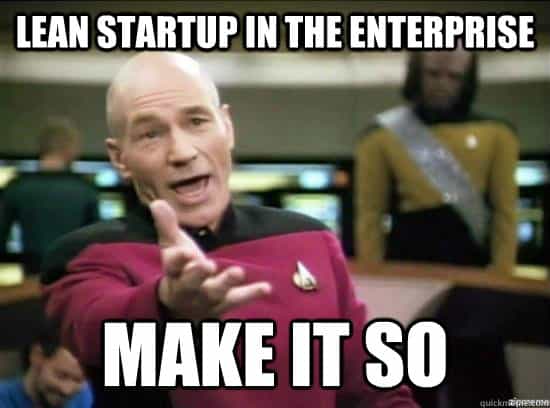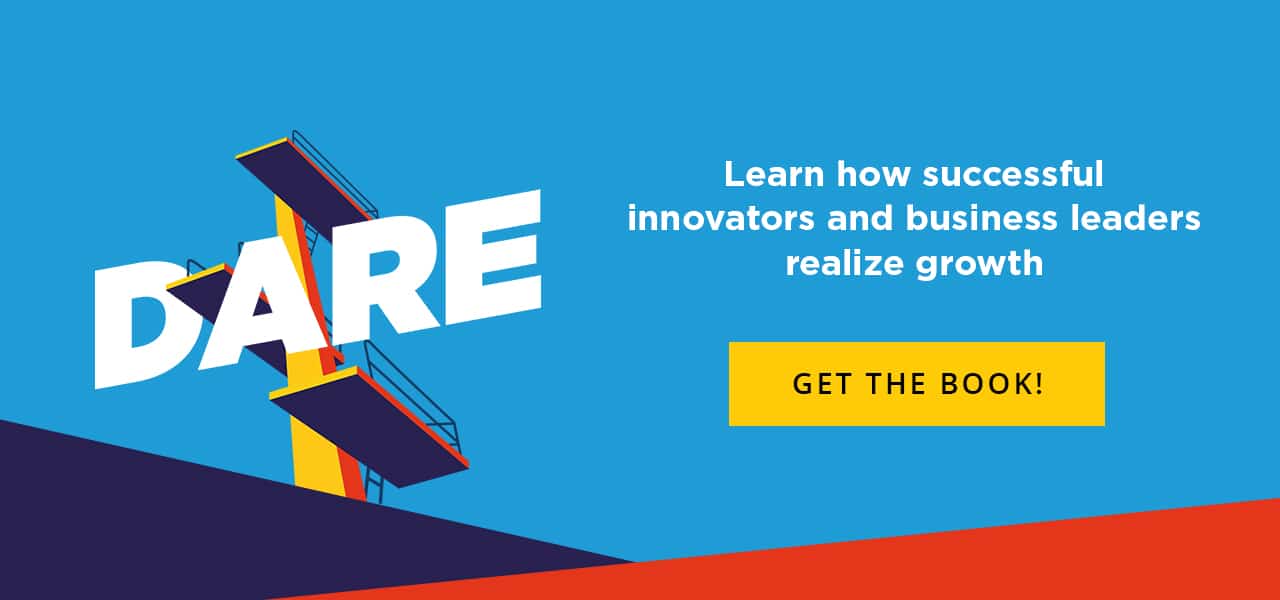Born in Silicon Valley and popularised by writers and entrepreneurs like Eric Ries and Steve Blank, Lean Startup was conceptualized as a way for new ventures with limited resources to tune into customer needs to develop and launch new products and services. Now practiced by every self-respecting startup and taught by most business schools around the world it has become the ‘language’ for new business model development and innovation.
Over the last few years, Lean Startup has been gaining strong momentum in large corporates as well. Companies like General Electric, Alaska Airlines, Telefonica, 3M, and Philips have adopted the approach and organisations that haven’t publicly pinned a Lean Startup flag to their flagpole are very likely to have adopted some elements.
Gartner has estimated that next year (2021), more than 50% of established corporations will be leveraging Lean Startup techniques at the business level to increase the pace and success of business transformation.
“Businesses must change how they change — they must enhance and rebalance their transformation capabilities to handle uncertain environments as well as certain situations,” said Bruce Robertson, vice president and distinguished Gartner analyst.

According to a poll from HBR, the top five benefits of the Lean Startup approach that were mentioned most frequently by their corporate respondents, who came from a wide range of industries, were:
- Making decisions based on evidence and data, rather than executives’ instincts.
- A faster cycle time for developing ideas.
- Better-quality feedback from customers and stakeholders, often because you’re asking them to actually buy something, rather than just spout opinions in a focus group.
- “Getting out of the building” to speak to and observe real customers and stakeholders.
- More flexibility about making changes to ideas as they progress from concept to “minimum viable product” to finished product.
But while lean startup concepts have become mainstream, adoption hasn’t been as prolific in the corporate world. Why might that be?
Applying Lean Startup in a corporate setting is very different from a startup for two principle reasons; process and culture.
Let’s first think about the processes in a typical startup – a small group of likeminded individuals with a great idea, passion, and a place to work. They can disrupt large, established players precisely because they are agile and nimble. They can make quick decisions amongst themselves and they can divert resources and funds quickly based on data. Most importantly, they can work and iterate quickly, trust the approach, and primarily make decisions based on data.
Those things aren’t features anyone expects to see in large, mature organisations where decisions are made slowly, communication is difficult, risk management processes can be cumbersome and the sheer number of people in the organisation makes it near impossible to align everyone behind the Lean Startup approach. In other words, trying to apply ‘lean’ in a slow, cumbersome, ‘un-lean’ process kills it.
The HBR Innovation Leader survey of 165 Executives at large companies supports this hypothesis. I identified the top challenges cited by innovation leaders in adopting the Lean Startup approach.

The principle challenge identified by half of the respondents was a concern about showing products to customers before they are “baked” or “polished”. This, we have to assume relates to the concept of an MVP (minimal viable product) which is a fantastic tool for seeking out customer feedback on new products or features before they are built into the final product. Evidently, it is clearly seen as more challenging for established organisations with thousands or even millions of customers that have a reputation cost than in startups with a handful of customers or users.
A strong advocate of Lean Startup might look at these responses and reply “ah, but it doesn’t have to be that way, they’ve misunderstood Lean Startup” which may be a perfectly fair criticism. It’s equally fair to point out that we all use prejudices about things to justify the position that we have already come to.
But process issues aren’t the only barrier. As always, it’s also often a cultural issue.
According to GE vice chairman Beth Comstock in a 2014 interview, “it’s easier to read the book ‘The Lean Startup’ or hire a training firm to run workshops than it is to use the approach to deliver real value in an organization with billions in revenue. There are two reasons for that. The first is that lean startup goes against the cultural grain for most companies, and secondly it can threaten the authority of decision-makers”.
The Lean Startup approach demands that decisions are made based on the evidence from experimentation. This might be challenging for senior executives who are paid well to make decisions based on their experience and gut feeling.
As well as potentially competing with individual roles, Lean Startup can be seen to be competitive to R&D teams. A typical R&D division works in timeframes of 1-2 years, 3-5 years, and 5-10 years to market, which is far from Lean startup practices.
Culture also extends into how an organisation and the individuals in that organisation judge risk. In the paper titled Implementing Lean Startup Methodology in Large Firms -Benefits, Challenges and Solutions, Karlsson and Nordstrom cited research from interviews with R&D Managers and Innovation Directors of 14 multinational companies and found: “In startups, entrepreneurs have great potential upsides and limited downsides, whereas in large companies the inverse is seen which makes it harder to incentivize entrepreneurial behaviour”. Even when innovative ideas surface, a manager’s attitude to risk can mean that “radical ideas often get killed in organisations if they have not yet established a track record or developed enough technology or information”.
Despite these challenges, Lean Startup can and does work in large organisations, but differently.
One approach is to focus Lean Startup in specific and new areas rather than attempting to replace tried and tested practices.
Michael Docherty in his book “Collective Disruption” cites his friend Ricardo dos Santos’ model (see below) which describes where Lean startup works (and doesn’t work) in mature organisations. As you can see from the diagram, the suggestion is that Lean Startup works where ideas occupy a space where the technology AND market is brand new.

An alternative approach is seen at GE. As a 125-year-old company they are by definition as far away from being a startup as you could possibly get however they are often cited as a successful example of a large organisation exploiting Lean Startup. Interestingly they brand it as FastWorks and in doing so dropping the word startup and the connotations it brings. Fastworks translates Lean Startup principles and other disruptive strategies across its ecosystem in order to combine the speed and agility of a startup with the scale and resources of a large enterprise. The implication is that it is easier to align people behind an approach that is ‘theirs’, for which they take ownership, than an approach that’s used by (small) startups messing around freely and facing limited risks.
Closing thoughts
If you are reading this and you work in a large organisation, keep reading about it (here‘s a list of the most popular books), watch videos (here) and go to startup conferences. There is a huge amount to be gained from the approach and way of thinking in any setting, but be aware of the process and cultural barriers and where possible find projects or areas where you will find the least resistance. This type of change requires an innovative mindset. Learn more on how to foster one in our best selling book on Innovation: DARE, the mindset of successful innovators in the digital age.
Björn Brekel
Lead growth hacker @ RevelX
Bringing startup thinking to the boardroom
Road cycling, minimalism and blockchain enthusiast
Related posts
Strategies to counter disruption or to become a disrupter yourself
We see the same things happening in the business world.…
January 7, 2021
Early warning signals for disruption
Any industry can be disrupted. Netflix is a famous example.…
December 15, 2020
The Great Reset: Disrupt Or Be Disrupted
We live in times of unprecedented change. In order to cope…
December 3, 2020




